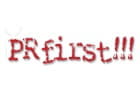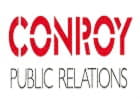
Angie O’Donnell
What’s the “playbook” for leading in such ambiguous times? Many leaders are yearning for guidance on how to engage and enroll their teams during this great pause where uncertainty is high and motivation could be low. Leaders are in the spotlight more than ever, with people highly attuned to leaders’ words, moods and behaviors acting as proxy for certainty. The ambiguity of the macro-environment causes people to turn to their micro-environment of work, and particularly to the relationship with their leader, for a sense of community and belonging. This is not a time for leaders to be invisible or hands-off; in fact, this moment is asking for leaders to show up and connect with others to create the gravitational pull needed for engagement.
Connecting with others is the first leadership behavior in a simple leadership framework that we call CORE: Connect, Organize, Recognize and Empathize. Every leadership model has its foundation or building blocks; the remote working environment presents leaders with the challenge of motivating and engaging others by leveraging relational skills. When there’s no office destination, off-sites, fancy latte machines, game rooms, food trucks or any of those community aspects of work, what still remains and requires cultivating is the relationship with you, the leader.
The CORE framework is not linear or sequential; this is an emergent model where you as the leader ask yourself at the end of every week – have I engaged in these four leadership activities and what were the outcomes? Can I scan for the signs of increased productivity and positivity?
Let’s begin with Connect:
Think of this as “being” with others versus “doing” with others. As a leader, much of your communication with others, whether by phone, email, text or other digital platforms, is likely focused on getting stuff done. Execution, problem-solving, managing clients, planning, forecasting and the many tasks of leadership could occupy 100% of your time. In the virtual world, it can be easy to diminish the importance of being with others in ways that foster deeper connections. This may require a mind-set shift away from the impulse to execute in a continuous loop to creating breaks in the loop to do a sincere check-in with people. Disrupt the loop with a fifteen-minute call with your key people to check-in and ask them how things are going. This is a listening exercise where the personal and professional may blend together, where others experience you as being with them for just a few minutes.
Organize:
At first glance this may seem like a bland and boring leadership behavior that doesn’t require your focus, but consider the fact that most people had to completely reorganize their lives and routines overnight. Initially, it was chaos as families coped with personal and professional disruption while trying to still hit the deadlines at work. Emotions ran high as uncertainty and disbelief took over, while the need for everyone’s safety and well-being came to the forefront. These conditions create a vacuum where the leader can step in to organize and bring clarity to goals, roles and timelines. The time is right to create conversations and forums to get organized and not leave it to happen organically (even if that was the way it happened in the past).Virtual off-sites are now being designed to bring the rigor that will be necessary for 2021.
Recognize:
Celebrating wins has always been in the leadership toolbox. Those wins may have been more visible to the team when the team had face time, but now it may require an intentional acknowledgement from the leader. How are you tracking wins? What kinds of recognition are most meaningful right now to your team? How are you ensuring that your cross-functional players are getting acknowledged? Feeling proud of our accomplishments is one of the biggest motivators for all of us and verbal recognition from the leader is memorable and costs nothing.
Empathize:
Practice empathy with yourself and others in an open and expressive way; this too will engender a feeling that you are human and not a superhero. That may mean sharing a story about a struggle you’re experiencing as a result of the pandemic, or simply saying on a Friday call that it was a rough week. Expressing empathy for others in your 1:1 calls is an easy leadership behavior that’s often overlooked as our tendency may be to forge ahead into tasks and to-do lists. The first two minutes is an ideal time to ask them what new personal or professional challenges may be emerging as the weeks go by. This type of personal connectivity is “sticky” and builds emotional buy-in from others. And hopefully, as others see their leaders modeling empathy, they’ll do the same and it will create a profoundly powerful ripple in the organization.
As you begin to consciously practice the CORE framework daily, like any other regular behavior, a habit will form and people may experience you as a leader who “gets them” at a time when feelings of belonging may be low. The uncertainty that people are experiencing in all aspects of their lives will be better balanced with a trusting, reliable and caring relationship with their leader.
Angie O’Donnell is an executive coach and co-founder of 3D Leadership Group (www.3dleadershipgroup.com), a Wellesley-based leadership development firm. She can be reached at angie.odonnell@3dleadershipgroup.com.














